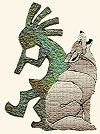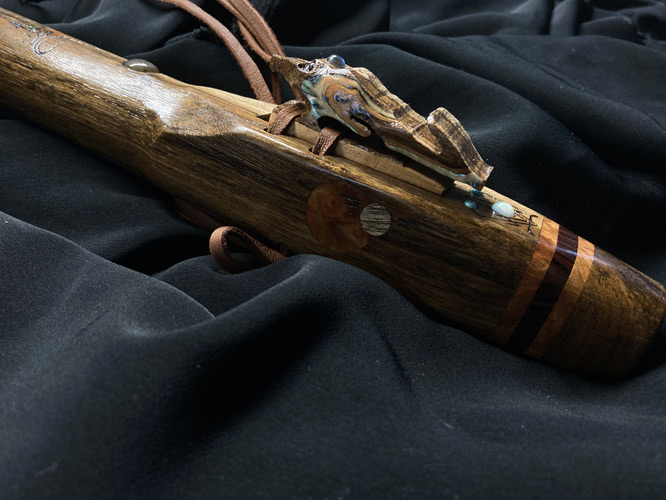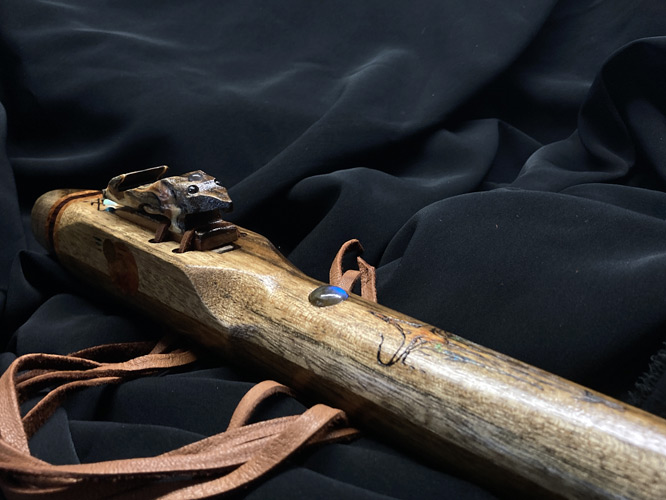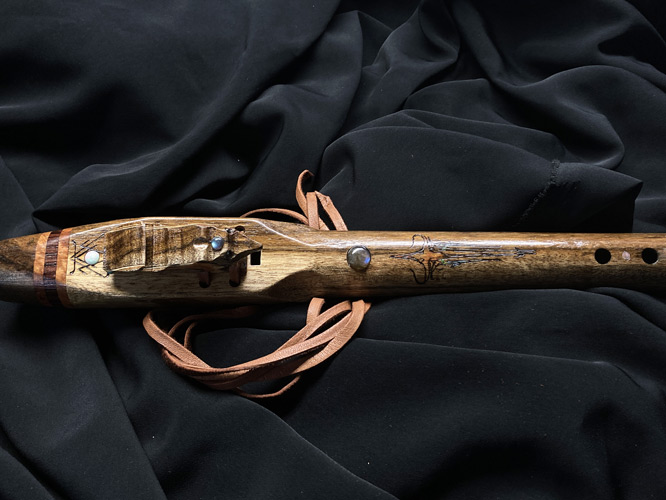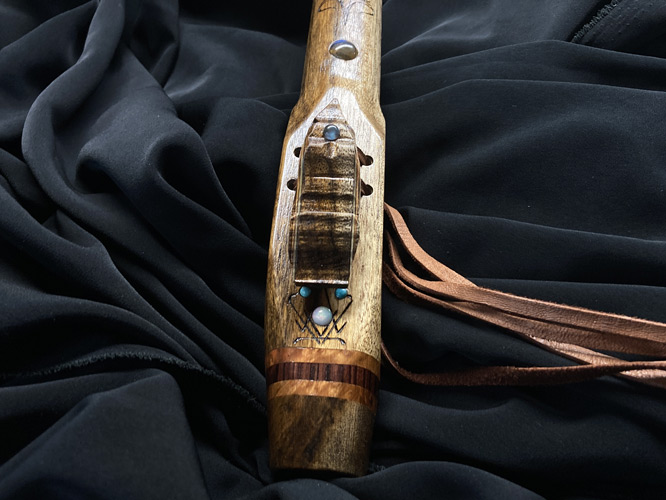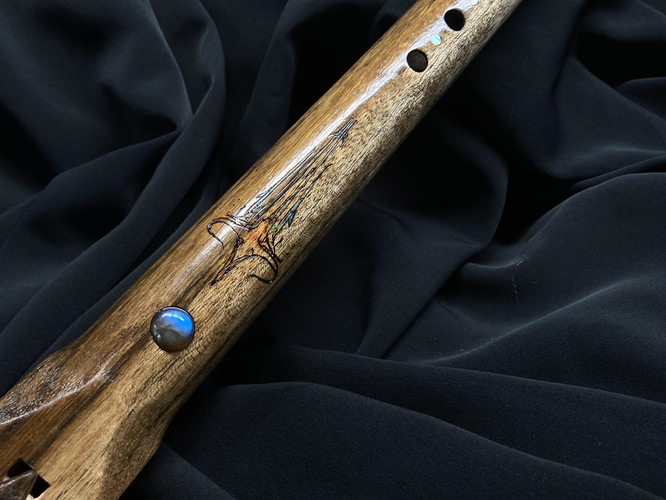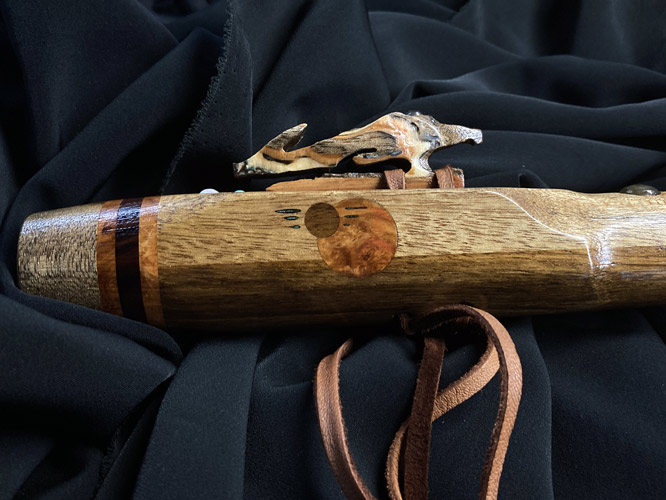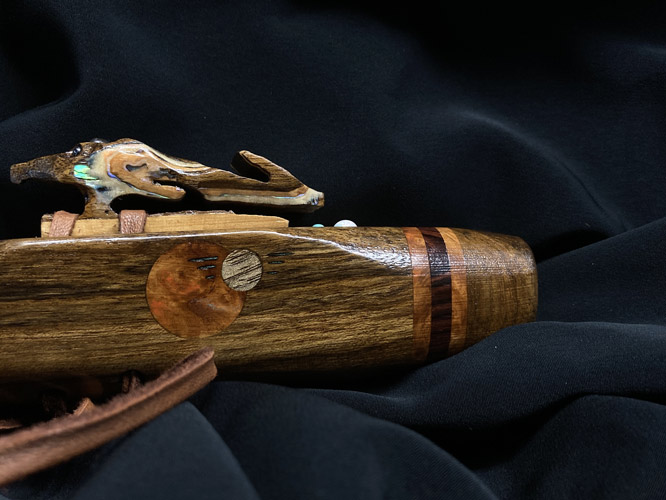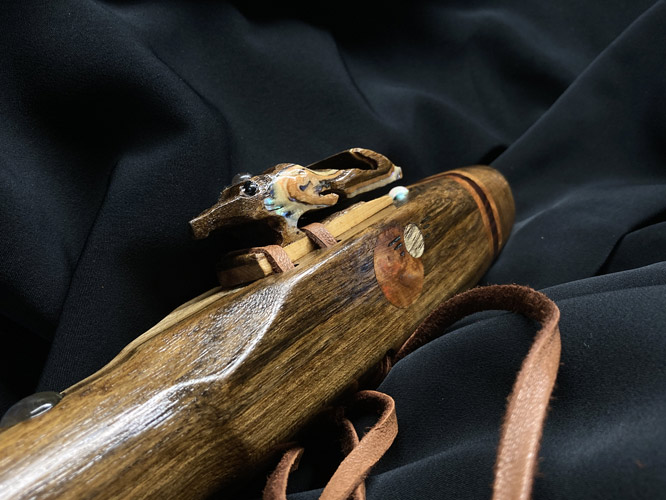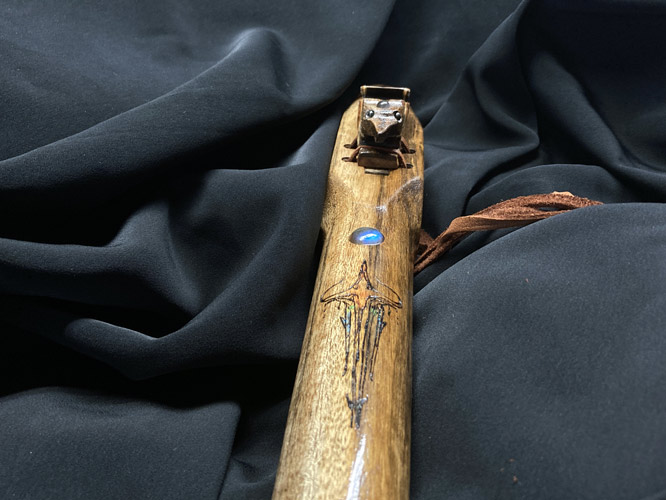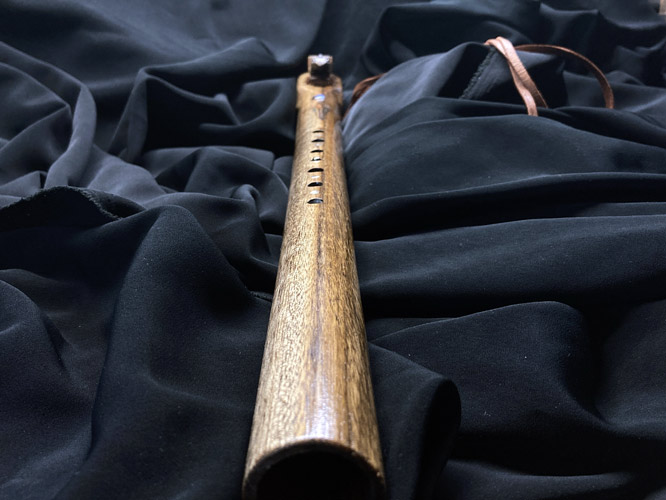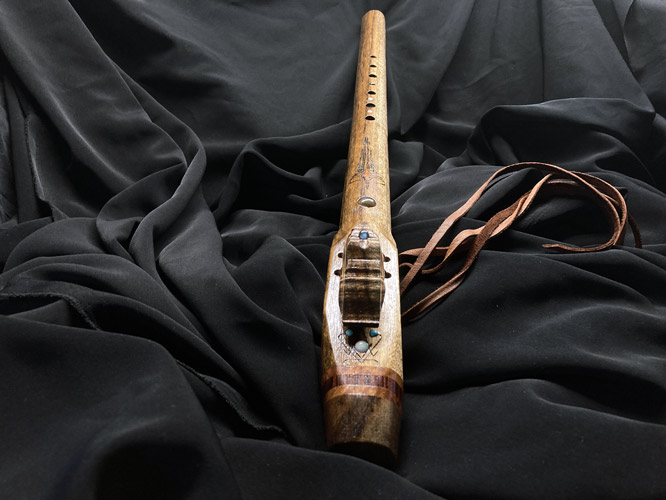$385.00
FREE DOMESTIC SHIPPING
Ovangkol Dm
SOLD
This instrument is built from a tropical West African hardwood, occasionally known as Amazique, and I don’t know why. It has a 1” bore diameter, and weighs in at 24-3/4 inches in length. With a teaspoon of attitude, and some subtle artsy stuff, this is not your Grandma’s woodwind. Subtle hand colorizing was done throughout the project.
Woods used, beginning at the mouthpiece, include either ebony, or cocobolo…I think it’s cocobolo, between layers of South Asian amboyna burl wood, capped with the ovangkol. Each side of the compression chamber is inset with 22mm disks of the amboyna burl, which are themselves inset with contrasting elements of the light/dark ovangkol, accented with pyrographics filled with turquoise powder. The block, a stylized bird is cut from the ovangkol, and bonded to a base of Oklahoma red cedar for moisture control. The cut is aligned light to dark to match the flute. The wing overlay consists of paua abalone, mappa burl, additional dragon skin abalone, yew, more abalone, and lastly a layer of the contrasting ovangkol.
Inlay, again from the mouthpiece starts with a 7mm dome cut Australian fire opal, flanked by 4.3mm Battle Mt. NV turquoise dots. Forward from the block, I’ve inset a 12.3mm dome cut labradorite, which accents the pyrographics just south of the stone. The finger holes are accented with four 4mm abalone dots, as well as a 6mm dome cut hematite cab. Lastly, the block has an additional 6mm labradorite cab set to the crown and 2.8mm hematite beads, set as eyes.
The flute was tuned at a non-contact wood temperature of 77.2° F. An ambient temp of 73.1°F, with 53% humidity at sea level. The ties run through the instrument, rather than around it. To dry the flue area it is only necessary to loosen the ties, and pull the block gently to the side such that it clears the flue area.
SOLD
